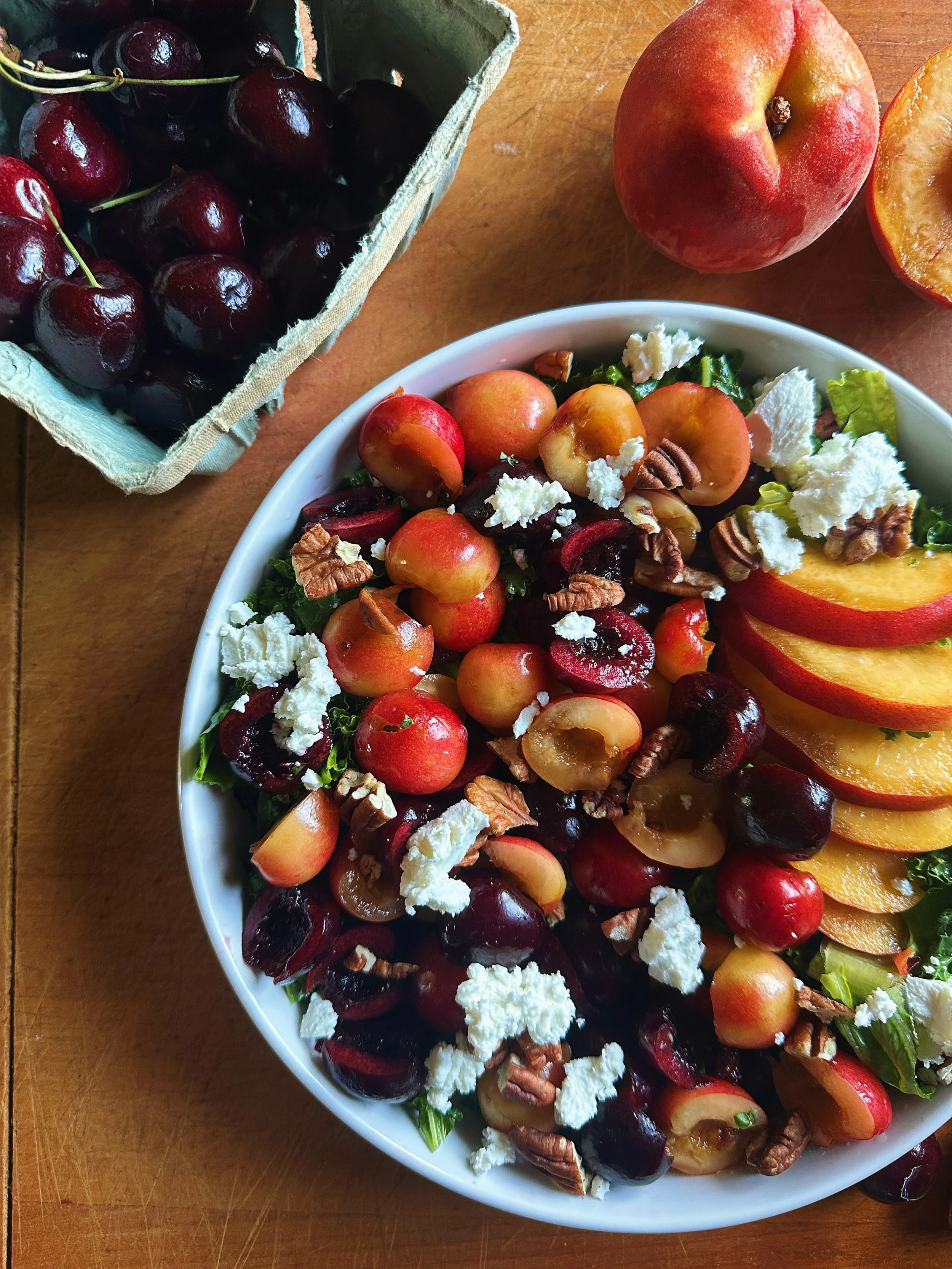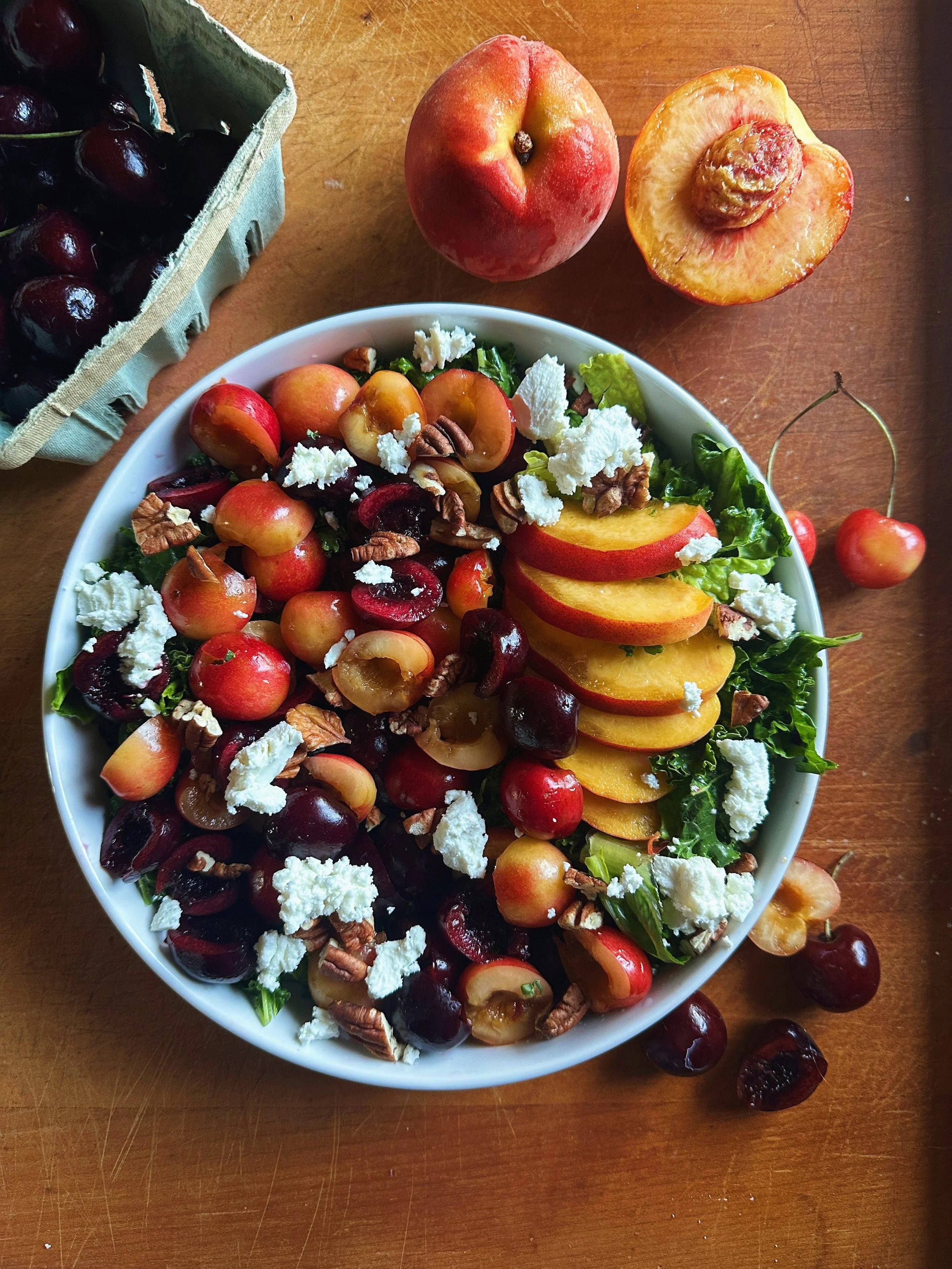Why Not Salad for Breakfast? That is the question.
We’re conditioned to think of breakfast as sweet or carb-heavy—toast, cereal, pancakes, eggs. But sometimes, the body craves something crisp, fresh, and vibrant, especially on those weird summer mornings that are cool yet sticky with humidity. That’s where my go-to breakfast salad comes in. Yes, salad for breakfast. It’s not just acceptable—it’s delightful. And this one brings together everything I love:
The tender bite of massaged kale
Juicy summer stone fruit—sweet peaches and tart cherries
Creamy goat cheese
A pop of flaky sea salt to tie it all together
The crunch of nuts
It’s satisfying but light, packed with fiber and nutrients, and quick to prep. Plus, it’s a beautiful way to enjoy the height of peach and cherry season. You can add a poached egg or toasted nuts (I love adding toasted pecans) if you want to bulk it up, but honestly, it’s perfect just as it is.
Let’s normalize salads anytime—especially first thing in the morning.
🍑 Kale, Cherry & Peach Breakfast Salad
Serves: 1 hearty portion or 2 light servings
Prep Time: 10 minutes
Total Time: 10 minutes
Ingredients
2 cups kale, stems removed and thinly sliced
1 tsp olive oil
1 tsp lemon juice or apple cider vinegar
1 ripe peach, sliced
½ cup fresh cherries, pitted and halved
1 oz goat cheese, crumbled
Flaky sea salt (like Maldon), to taste
Optional: cracked black pepper, or toasted nuts
For the dressing
Juice of 1 1/2 lemons
4 tsp honey
splash of olive oil
Salt and pepper to taste
Instructions
Massage the kale: In a medium bowl, combine the kale, olive oil, and lemon juice. Gently massage with your hands for 1–2 minutes until the leaves soften and darken.
Assemble the salad: Top the kale with sliced peaches and cherries. Drizzle with the dressing and toss.
Finish and serve: Sprinkle goat cheese and a pinch of flaky sea salt on top. Add optional toppings if using. Serve immediately.
Mondays - Sweet Tea & Friends, Hearth & Soul Community, You Are The Star, Love Your Creativity Link-Party // Tuesdays- Tuesday Turn About, Nature Notes // Wednesdays- Let’s Have Coffee, Wonderful Wednesday Blog Hop,Homestead Blog Hop, Happiness is Homemade // Thursdays-Thursday Favorite Things // Fridays- Farmhouse Fridays, Five Minute Friday Crazy Little Lovebirds// Weekly Run Down with Kim at Running on the Fly // Foodies Read at Based on a True Story (monthly) // Cook the Books Club (bi-monthly)



